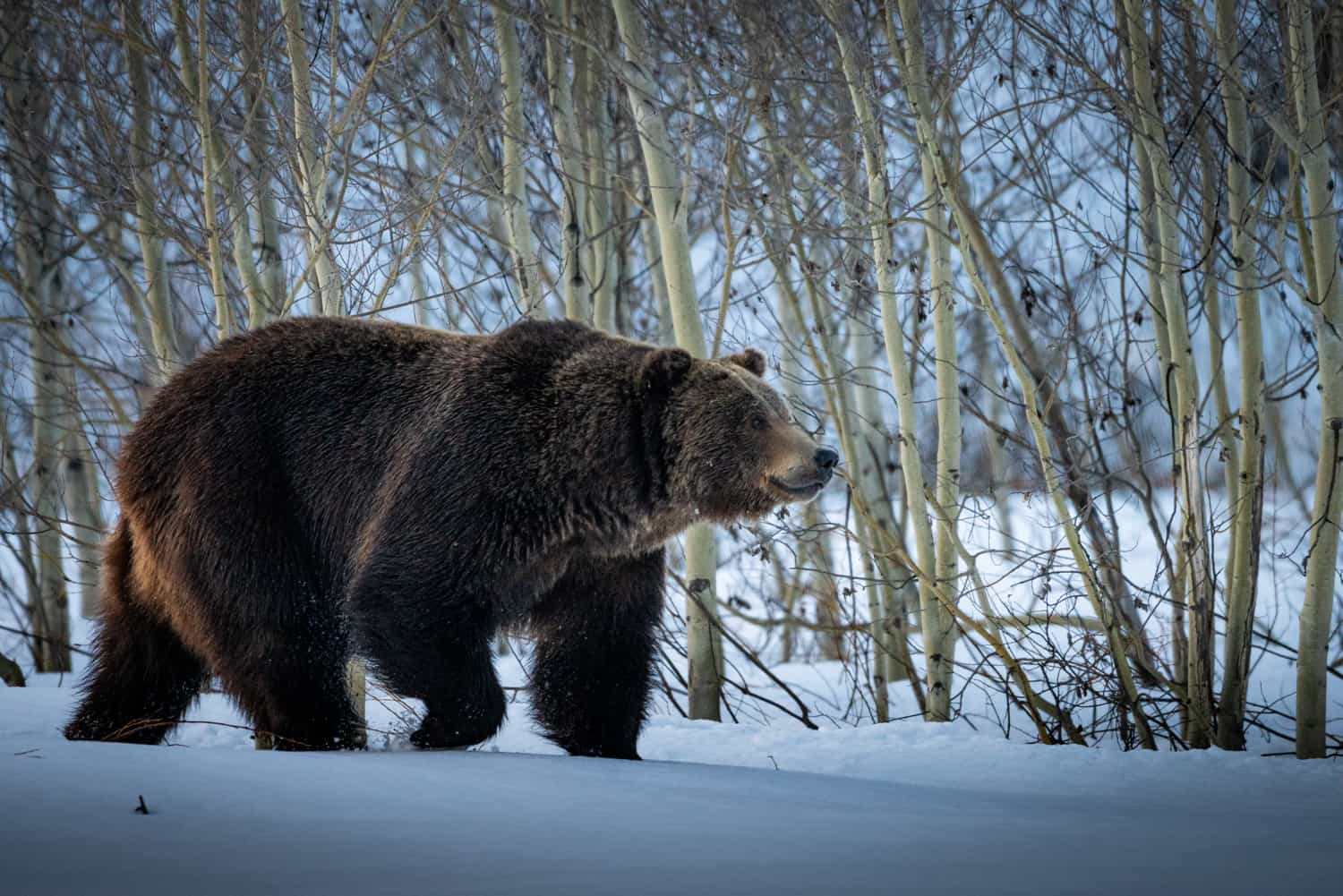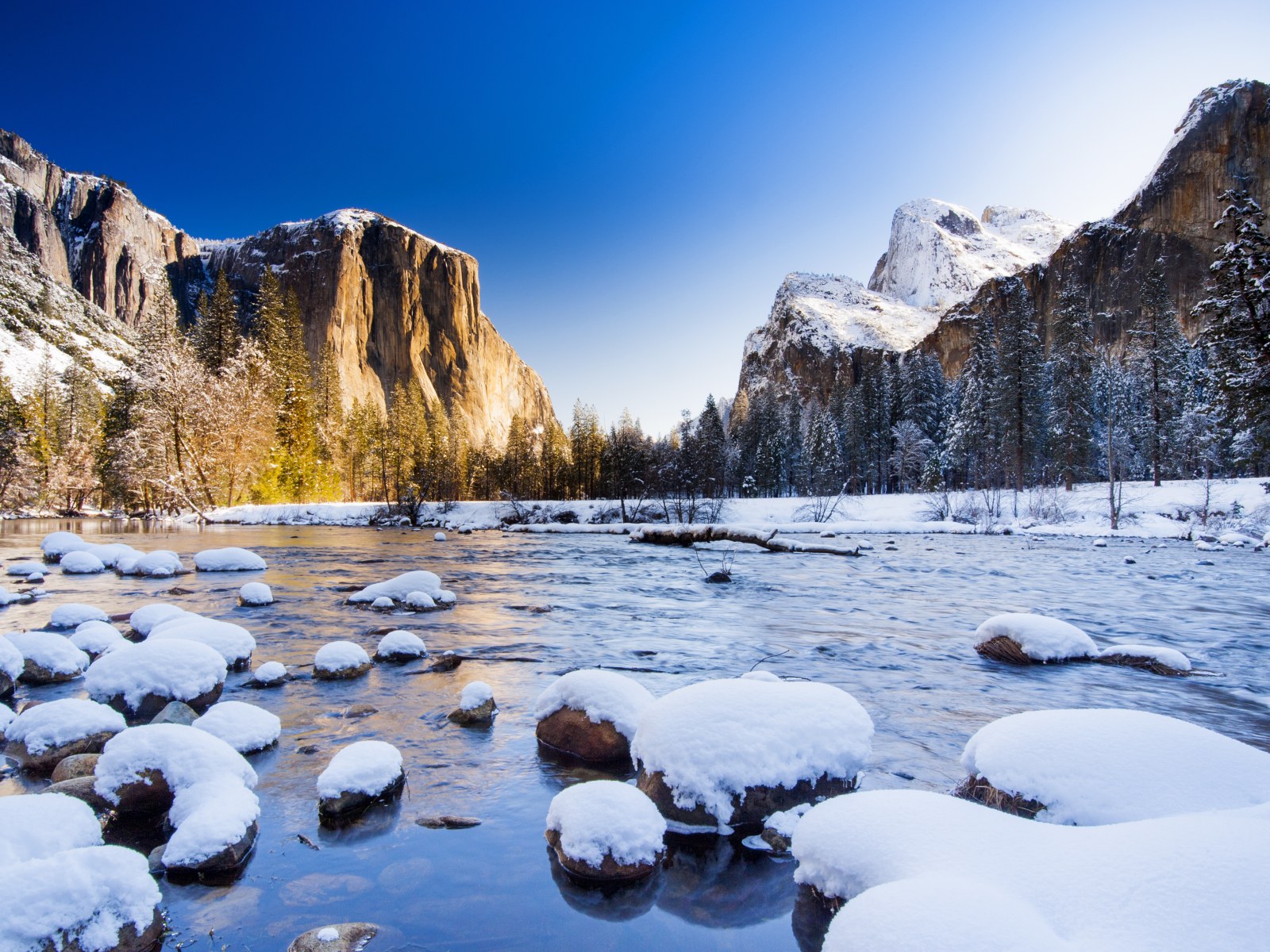Washington State Wildlife: What animals can be found in national parks and rural areas
Washington State is known not only for its high standards of living, but also for its amazing natural environment, providing a huge variety of opportunities for outdoor enthusiasts and wildlife watchers. Here you can find majestic mountains, dense forests, clear rivers and lakes, and coastlines lapped by the Pacific Ocean. This state is home to many species of animals that can be found in both national parks and rural areas. Below, let’s take a look at some of the most famous local fauna and where to see them.
National Parks and Wildlife
Washington is proud of its national parks, which are some of the best places to see wildlife.
1. Mount Rainier National Park
Mount Rainier, with its elevation of over 4,300 meters, is home to a variety of animal species. Animals that can be found here include:
- Noble deer: often seen in high mountain meadows.
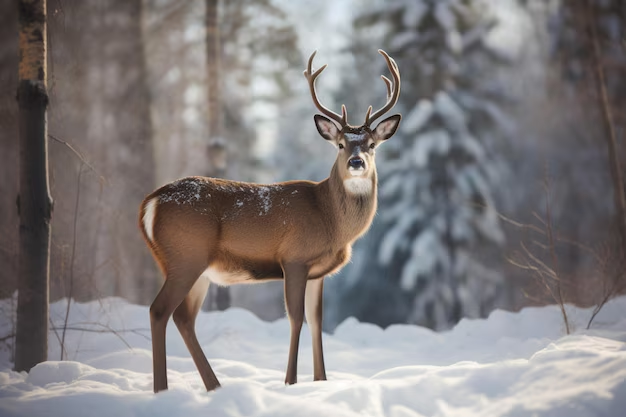
The noble deer, also known as wapiti, is one of Washington State’s most majestic wildlife species. This large deer species can be found in various parts of the state, including national parks and protected areas. Noble deer are a symbol of strength and grace, and their presence in the wild creates an impressive display.
Noble deer are characterized by their massive antlers, which have many branches and can reach impressive sizes. Males are particularly impressive with their large antlers, which they use to show strength and fight for females during mating season. Females are smaller in size and do not have antlers.
These deer prefer to live in dense forests and open mountain meadows. They feed on grass, leaves, tree bark and other plant materials. Red deer are known for their migratory behavior – they can move long distances in search of food and suitable wintering grounds.
In Washington State, red deer live primarily in mountain and forested areas such as Mount Rainier National Park, Olympic National Park, and North Cascades National Park. These areas provide ideal living conditions for deer: wide open spaces with dense vegetation and an abundance of food.
They are especially common in the alpine meadows of Mount Rainier, where they graze during the summer months, and in the rain forests of the Olympic Peninsula. In the fall and winter, they migrate to lower elevation areas to escape the harsh weather conditions at altitude.
Although red deer prefer to avoid contact with humans, they can sometimes be seen on the outskirts of populated areas, especially in suburban and rural areas. It is important to remember that these animals are wild and you should not get too close to them, especially during the rutting season.
Wapiti are a protected species in Washington State. Thanks to conservation efforts, the noble deer population in the state remains stable.
The red deer is a symbol of Washington State’s wildlife, and its presence in the forests and mountains adds to the uniqueness of the natural scenery. For nature lovers and tourists alike, encountering this majestic animal is an unforgettable experience.
- Baribal (American black bear): Common in forests and can be seen at a distance.

The baribal, better known as the American black bear, is an important member of the fauna of Mount Rainier National Park. This bear is one of the most common large mammals in North American forests, and its presence in the park plays an important role in maintaining the region’s ecosystem.
Baribals can have a variety of coat colors, despite the name “black bear.” Their fur ranges from charcoal black to dark brown and even red. On average, an adult baribal weighs from 90 to 300 kilograms, with males much larger than females. They are characterized by a massive physique and short claws, which allow them to climb trees perfectly.
Bears have a good sense of smell, which helps them find food over long distances. They lead solitary lives and are relatively peaceful, avoiding contact with humans unless provoked.
Mount Rainier National Park provides an ideal environment for the baribal. The park encompasses a variety of ecosystems, from dense coniferous forests and alpine meadows to rocky mountain peaks. Baribals typically inhabit forested areas where they can easily find food and shelter. In summer, bears often move into alpine meadows to gather berries, roots and plants, which form the bulk of their diet during this season.
Mount Rainier bears are known for their habit of preparing dens for themselves in forested areas where they spend the winter hibernating. During hibernation, female baribals usually give birth to cubs that remain with their mother until spring.
Baribals generally avoid contact with humans, but tourists visiting the park may encounter these bears on some trails and meadows. It is important to take precautions: keep a safe distance from the animals and do not attempt to feed them. Mount Rainier National Park has strict food storage regulations to avoid attracting bears to tourist parking lots and campgrounds.
Baribals are protected under the wildlife conservation program in Mount Rainier Park. The bear population in the park is maintained at a stable level through efforts to preserve their habitat and minimize interaction with humans.
The baribal in Mount Rainier National Park is a symbol of the region’s wildlife, attracting visitors and keeping the ecosystem balanced. Seeing this majestic bear is a rare and exciting opportunity for those who venture into the park.
- Mountain Goat: in rocky areas at high altitudes.
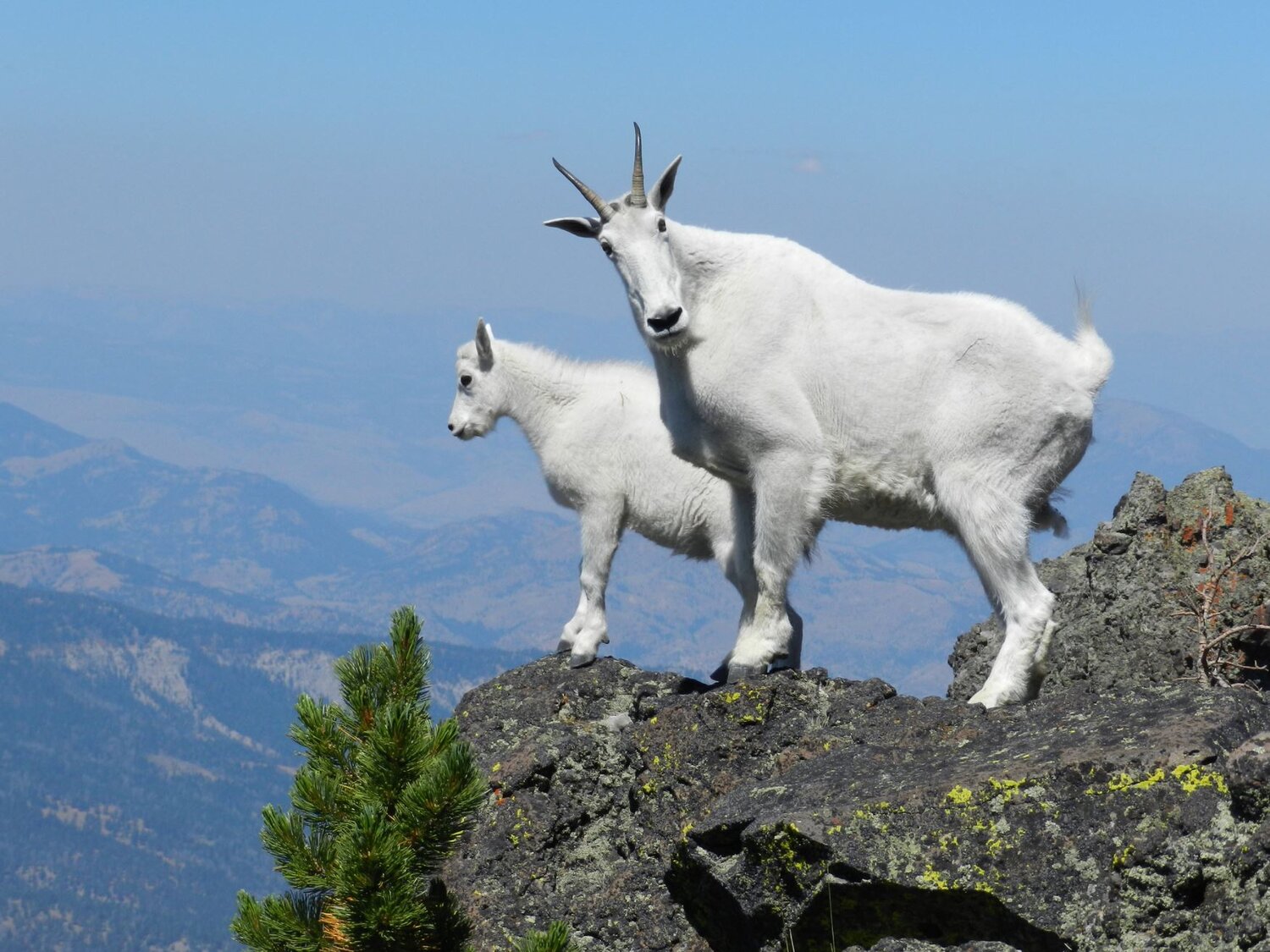
The ibex is one of the most impressive animals to be found in Mount Rainier National Park. This hardy species lives in the harsh conditions of the high mountain regions and symbolizes the wildlife of the park. Mountain goats, with their sturdy build and long, sharp horns, are adapted for life on steep slopes, making them masters of high altitude survival.
Mountain goats have snow-white, thick fur that helps them endure the cold temperatures of Mount Rainier’s high peaks. Their massive build, muscular legs and padded hooves provide excellent traction on rocky and slippery slopes. The average weight of mountain goats ranges from 45 to 140 pounds, with males usually larger and heavier than females. Both sexes have long, curved horns that can reach lengths of up to 30 centimeters.
In summer, mountain goats are often found in alpine meadows where they graze on grasses and shrubs, while in winter they descend to lower altitudes to find food in less snowy areas.
Mountain goats lead a fairly solitary lifestyle, although small groups of several individuals can sometimes be found. They have a well-developed sense of defending their territory, especially against predators such as bears and cougars.
The mountain goat population in Mount Rainier National Park is protected and their numbers are closely monitored. In recent years, programs have been conducted to relocate mountain goats to other parts of the Cascade Mountains to maintain a healthy population in the region.
Mountain goats are one of the most notable and amazing animals found in Mount Rainier National Park. Their ability to survive in environments where other species cannot exist makes them true symbols of endurance and strength. Encountering a mountain goat while hiking the high mountain trails is a rare opportunity to see a wild inhabitant of these rugged and beautiful landscapes.
- Marmots and gophers: in lower areas of the park.

Marmots and gophers are two of the most interesting and easily observed small mammal species in Mount Rainier National Park, Washington. These animals play an important role in the park’s ecosystem, creating extensive burrows and contributing to the health of the alpine meadows. They are also beloved by hikers for their friendly nature and habit of basking in the sun near the trails.
Marmots, especially the Olympic marmot, are emblematic of the high alpine meadows of Mount Rainier National Park.
The Olympic marmot is a large member of the rodent family, reaching lengths up to 60 centimeters and weights up to 8 pounds. Their fur can range from reddish-brown to grayish-brown, which helps them hide among rocks and vegetation. They actively build elaborate burrow systems that serve both for shelter and winter hibernation, lasting up to eight months of the year.
Marmots are social animals and live in family groups, often spotted together in open areas where they graze and communicate using a variety of sounds ranging from whistles to short squeaks that serve as alarm signals when predators approach.
Marmots are often found on popular trails in the park, such as the Skyline Trail, where they may sit quietly on rocks watching hikers.
Gophers also inhabit Mount Rainier and actively dig their burrows in the lower parts of the park. These rodents are relatives of squirrels and lead a more secretive lifestyle, but can be found in meadows and near trails during the summer months.
Gophers are about 25 to 30 centimeters long and their coloration ranges from light brown to grayish beige. They are more agile and fast compared to marmots and can often be seen near their dens, from which they quickly run out to look for food and just as swiftly return at the slightest danger.
Gophers are less conspicuous than marmots, but they can also be found in meadows and near hiking trails. They are most likely to hide when humans appear, but if a safe distance is available, they can be observed going about their daily business of gathering food or repairing their burrows.
Maкmots and gophers are fascinating members of Mount Rainier National Park’s fauna and are often part of memorable experiences for tourists. Observing their behavior and interaction with their environment provides a unique opportunity to see the life of alpine animals in their natural habitat.
2. Olympic National Park
This park is famous for its diverse ecosystems, from coastal strips to rainforests to alpine peaks. Animal life here is represented by species such as:
- Roosevelt elk: the largest member of the deer family that inhabits the park’s rain forests.
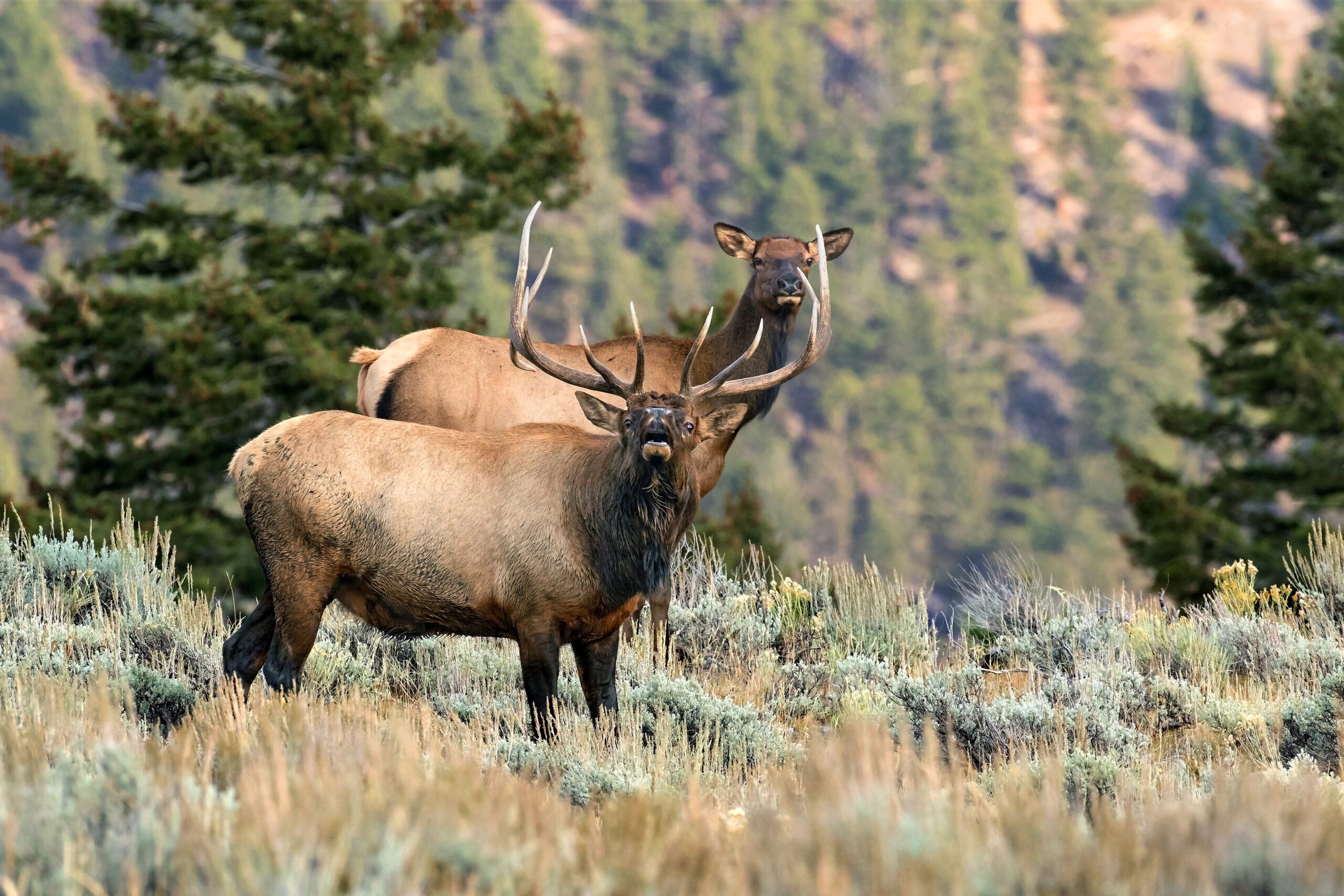
Roosevelt elk, the largest subspecies of North American elk, is one of the most impressive residents of Olympic National Park.
Olympic National Park provides ideal habitat for Roosevelt elk. These large herbivores prefer to live in the dense, moist forests and alpine meadows found throughout the park. They are most commonly found in lowland rainforests such as the Hoh Rainforest and Quinault Rainforest, where elk find an abundance of food and shelter.
Adult males can reach a withers height of up to 1.5 meters and weigh up to 500-600 kilograms. Females are slightly smaller and lighter, but still quite impressive in size. Males grow large and powerful antlers, which they shed every year in winter and grow again in spring.
The coat of these moose is coarse and thick, and its shade varies from dark brown to gray-brown, which helps the animals camouflage in dense forests and protects them from cold and wet climates.
Encountering Roosevelt Elk in the wild is an unforgettable experience for many visitors to Olympic National Park. These animals are most often seen on popular hiking trails such as the Hoh River Trail and
Lake Quinault. However, it is important to remember that moose are wild and rather unpredictable animals and approaching them is not recommended.
Roosevelt elk are an important part of the Olympic National Park ecosystem. Thanks to efforts to protect wildlife, their population remains stable. Roosevelt elk are a symbol of the wildlife of Olympic National Park. These majestic animals not only amaze with their size and grace, but also play an important role in maintaining the ecological balance of the region.
- Coyote and bobcat: often found in different parts of the park.

Coyotes and bobcats are important predators in the ecosystem of Olympic National Park. They play a key role in balancing populations of other species and add unique diversity to the park’s wildlife.
Coyotes in Olympic National Park have adapted to living in a variety of environments. These versatile predators can be found in forested areas as well as alpine meadows and lowland areas of the park. They avoid dense forests of rain forests, preferring open spaces and more accessible areas for hunting.
Coyotes are slender, medium-sized predators that resemble a small dog or wolf. They can reach a length of 1-1.2 meters and their weight ranges from 9 to 23 kg. A coyote’s coat is usually gray-brown with a reddish tint on their paws and ears. Their tail is fluffy and drooped down, which is one of their characteristic traits.
Coyotes are known for their cunning and ability to utilize different hunting strategies, including hunting alone or in small groups. They are nocturnal animals, which makes them more active during the evening and nighttime hours.
Although coyotes are fairly common in the park, they avoid direct contact with humans. Tourists may hear their distinctive howls at night or see them from a distance, but close encounters with these animals are rare.
The lynx is a stealthy and stealthy predator that prefers dense forests and rocky areas. In Olympic National Park, bobcats are found in remote areas with dense vegetation where they can hunt and shelter from potential threats. Bobcats are particularly active in temperate forests and mountainous areas of the park.
The bobcat is a relatively small wild cat with short legs and a powerful body. The average length of a bobcat is about 60 to 100 centimeters and its weight ranges from 7 to 15 kilograms. Bobcats have a short tail with a black tip, distinctive tassels on their ears and spotted fur, making them resemble miniature Lynxes.
Bobcats are solitary hunters that use their camouflage and stealth to sneak up on their prey. They are active mostly at night, making sightings a rare event. Encounters with bobcats in Olympic Park are extremely rare due to their secretive nature. These animals prefer to avoid contact with humans and live in the most remote areas of the park. However, tourists may notice signs of their presence, such as pawprints or prey remains.
- Whale killer whales and dolphins: inhabit the park’s coastal waters.
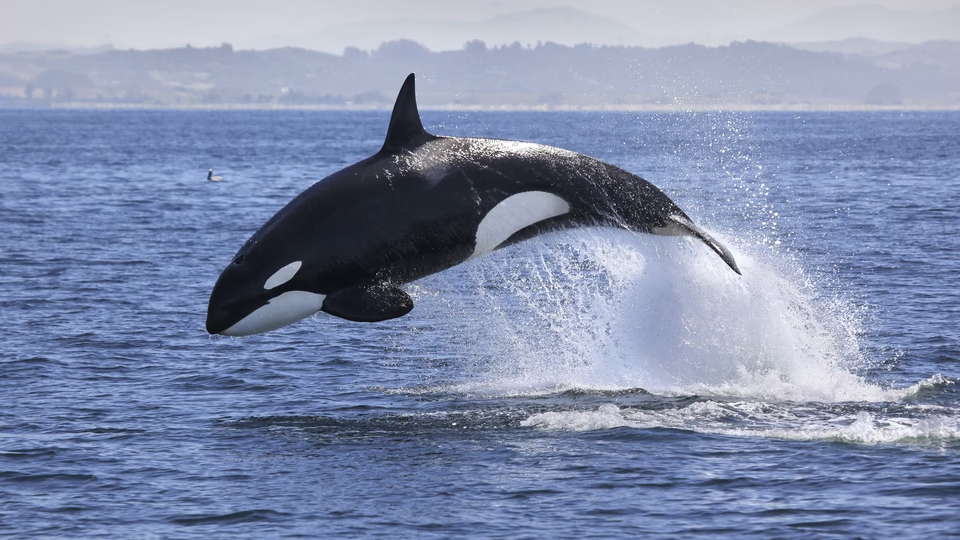
Whale killer whales and dolphins are some of the most impressive marine mammals to be found in the coastal waters of Olympic National Park. The park, which encompasses vast marine and coastal areas, offers many opportunities to observe these amazing animals in their natural environment.
Orcas are often found in the waters of the Strait of Juan de Fuca, which laps the western shores of Olympic National Park. These waters are rich in fish and marine mammals, making them attractive to orcas, especially in the summer and fall when fish, especially salmon, are at their peak.
Orcas are the largest members of the dolphin family. They are easily recognizable by their black and white coloration: black back and white belly with bright spots behind the eyes. Males can reach up to 9 meters in length and weigh up to 6 tons, while females are slightly smaller, with a length of about 7 meters and weighing about 3-4 tons. Their tall dorsal fin, especially in males, can reach up to 1.8 meters, making them easy to spot even from a distance.
Olympic National Park is one of the best places in Washington State to see orcas. Tourists can see these majestic animals during boat rides or from coastal vantage points such as Cape Flattery or the La Push coast. Local operators often offer whale watching tours, making this experience affordable for many visitors.
Several species of dolphins, such as dolphin-aphalines and Dall’s dolphins, can also be found in the waters of Olympic National Park. These species prefer coastal waters and can be spotted near the shores or in the open ocean.
Afalins are one of the best known dolphin species, with distinctive smooth bodies and gray coloration. They can reach lengths of up to 4 meters and weights up to 500 kg. Dall’s dolphins are smaller, measuring about 2 meters in length and weighing about 220 kg. They are characterized by black and white markings and shorter fins.
Dolphins are known for their playful behavior: they often jump out of the water, spin in the air and follow boats. Dolphin watching in the Olympic National Park is an unforgettable experience.
Orcas and dolphins are important members of the marine fauna of Olympic National Park. Their presence adds to the uniqueness of this region and makes it attractive to nature and marine life lovers.
- Puma: a secretive animal that is rarely seen, but its tracks can be found in the forests.
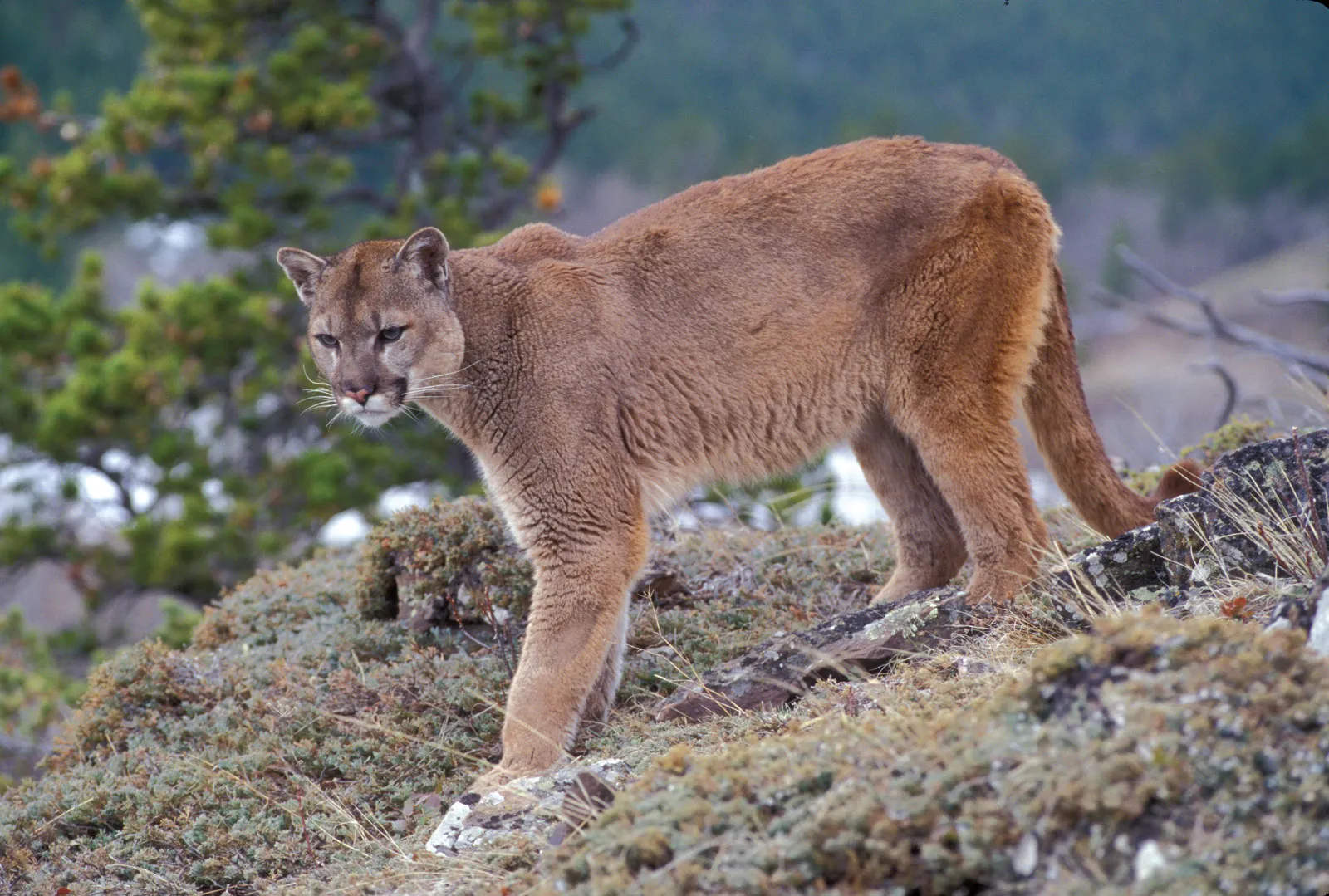
The puma, also known as cougar or mountain lion, is one of the largest and most mysterious predators found in Olympic National Park. This national park, with its vast forests, mountains, and remote corners, provides the perfect environment for cougars to live.
The cougar is a large and strong animal with a sleek build and long tail. They have a brownish-yellow coloration that helps them blend in with their surroundings. An adult cougar can reach a length of 1.8 to 2.7 meters, including the tail, which can be up to a third of the total body length. Males are usually larger than females and can weigh up to 70-100 kilograms, while females weigh around 40-60 kilograms.
In Olympic National Park, cougars live in dense forests, mountainous areas, and open grasslands. These animals prefer hidden areas with dense vegetation that allows them to hunt successfully while remaining undetected. The puma is a solitary animal that maintains its territory and rarely encounters other members of its species.
Pumas lead a nocturnal lifestyle and are rarely seen during the day, making their sightings very rare and interesting for tourists and researchers. These animals can travel long distances in search of food and to maintain their territory, which can cover dozens and sometimes hundreds of square kilometers.
Although cougar sightings in Olympic National Park are rare, they do occur. Cougars generally avoid humans and move away at the slightest sign of their presence, however, it is important to use caution when encountering them. The park provides behavioral guidelines for cougar encounters.
3. North Cascades National Park
Part of the larger Cascade Mountain ecosystem, this park is famous for its wildlife. Here you can encounter:
- Grizzlies: although they are rare, this park is home to a small population.

The grizzly, or North American brown bear, is one of the most majestic and powerful predators found in the North American Cascades and other northern regions.
The grizzly is a large and massive animal with a distinctive humped back that distinguishes it from the black bear. They have a dense build and powerful paws and claws, making them excellent fishers and hunters. The grizzly’s fur ranges from light brown to almost black, and in some cases it can have a silvery hue, which has given them the name “silverback”. Adult grizzlies can weigh between 200 and 450 pounds, and males are significantly larger than females.
North Cascades National Park, with its steep mountains, dense forests, rivers and lakes, is an ideal place for grizzlies to live. They prefer remote and little-visited areas where they can hunt and search for food in peace. Bears often travel through forests and mountain valleys in search of berries, nuts, fish and other food sources.
Today, the grizzly population in the North Cascades is extremely low, with various estimates of only a few dozen individuals remaining in these mountains. Grizzlies are protected in Washington State because they are an endangered species. Strong efforts are underway to recover them, including a habitat protection program and the potential relocation of bears to the region.
Grizzlies avoid contact with humans, but if an encounter does occur, it is important to know the rules of behavior. In North Cascades National Park, hikers and visitors are instructed on how to behave in bear areas.
Grizzlies are one of the most significant inhabitants of North Cascades National Park and a symbol of North American wildlife. Despite their low numbers, conservation efforts offer hope for a population recovery in this region. An encounter with this mighty predator is a rare and unforgettable experience that emphasizes the wild character of the park.
- Lynx and wolf: large predators that inhabit the rugged areas of the park.

The wolf plays an important role in the ecosystem of North Cascades National Park. This vast and remote park is one of the few places where gray wolves continue to live in the wild.
The wolf population in the North Cascades has begun to recover from their near extinction in the early 20th century. Wolves play a key role in the North Cascades ecosystem, maintaining a balance in the numbers of ungulates such as deer and elk.
Gray wolves typically form packs consisting of a dominant pair (alpha male and female) and their offspring. They are known for their highly social organization and cooperation in hunting.
For many visitors to North Cascades National Park, the opportunity to see wolf tracks or hear wolves howl is a rare and impressive experience. Wolves remain secretive and wary animals, and spotting them requires patience and luck. The national park not only serves as a refuge for wolves, but also promotes educational programs about the importance of these predators in the ecosystem.
- Snow goat: particularly common in high mountain rangelands.
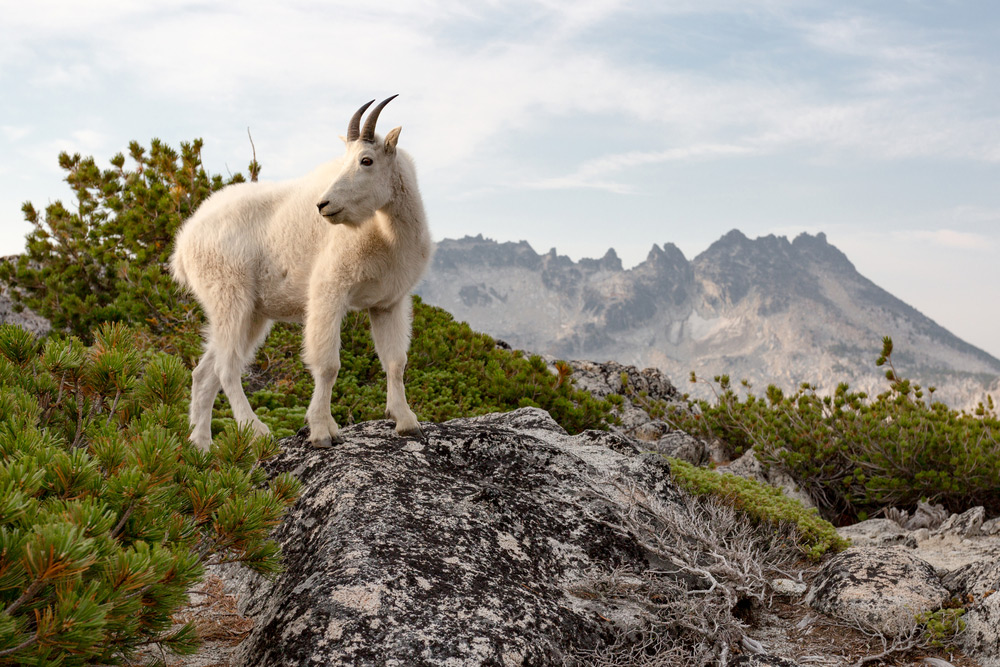
The snow goat is one of the most recognizable and impressive animals found in North Cascades National Park in Washington State. These graceful and agile altitude-dwelling mammals are perfectly adapted to the harsh mountain environment.
Snow goats have a thick snow-white coat that helps them keep warm in the cold conditions of the high mountains. In winter, their coat becomes especially thick, creating additional protection from winds and low temperatures. Adult snow goats reach a body length of about 1.2-1.8 meters, and up to 1 meter at the withers. Their weight ranges from 45 to 140 kilograms, with males usually larger than females.
Snow goats have black, thin and backward-curved horns, which are found in both sexes and can grow up to 20-30 centimeters. These horns are used both for defense against predators and in fights among themselves for territory or females. The hooves of snow goats have a special structure that allows them to move easily on steep and rocky slopes where other animals find it difficult to keep up.
In North Cascades National Park, they are found on rocky steep slopes and alpine meadows. During the summer months, snow goats ascend to alpine pastures where they forage on rich grasses, and in winter they move lower to wooded and rocky areas where they search for food under the snow.
Snow goats usually live in small groups consisting of females and their offspring. Males prefer a more solitary lifestyle or may congregate in small bachelor groups.
For visitors to North Cascades National Park, snow goats are a symbol of wildlife and mountain majesty. Encountering them on the trail can be a memorable experience. However, hikers are advised to use caution and keep their distance from these animals as they can be aggressive when threatened.
Animals in rural Washington State
Washington’s rural areas offer equally interesting wildlife encounters. Different types of wildlife can be found by county:
- Yakima County: This is an agricultural region where coyotes, rabbits, and even badgers can be found. The hilly areas are home to deer and mountain lions.
- Skagit County: This area is known for its river valleys and farms where you can see elk migrating, as well as many species of birds such as eagles and geese.
- Columbia County: Known for its vast fields and plains, this region is also home to coyotes, foxes, and small mammals.
- Olympic Peninsula: Deer, elk, coyotes, and many other species, including rare birds, can be found in the peninsula’s rural areas.
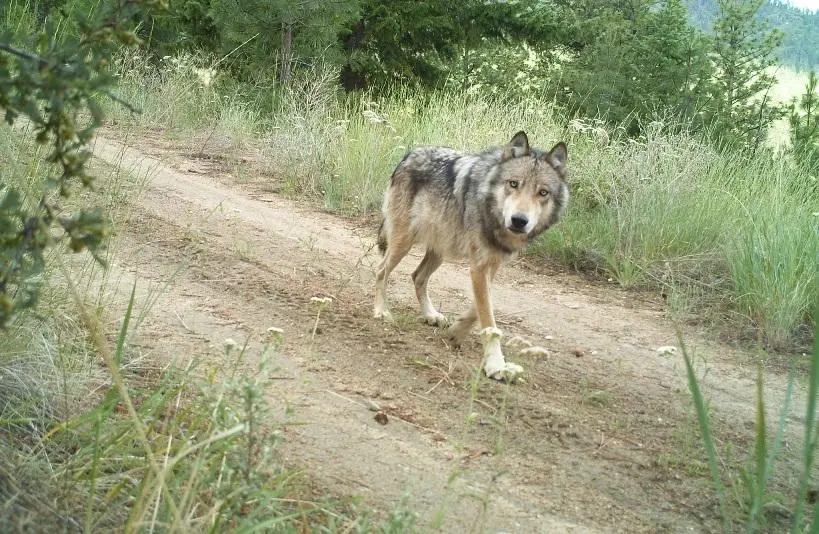
Why Washington State is an attractive place to relocate
Washington attracts not only its nature, but also its high quality of life, outdoor activities, and diverse culture. This state offers an ideal environment for those seeking a balance between city life and nature. Local cities and towns provide access to all the amenities you need while maintaining proximity to natural beauty.
Our moving company is ready to take care of all your moving needs in this beautiful state. Whether you are looking to settle near national parks or rural areas, we can help you make the process easier.
Contact us in any way:
Telephone: (888) 282-6940


